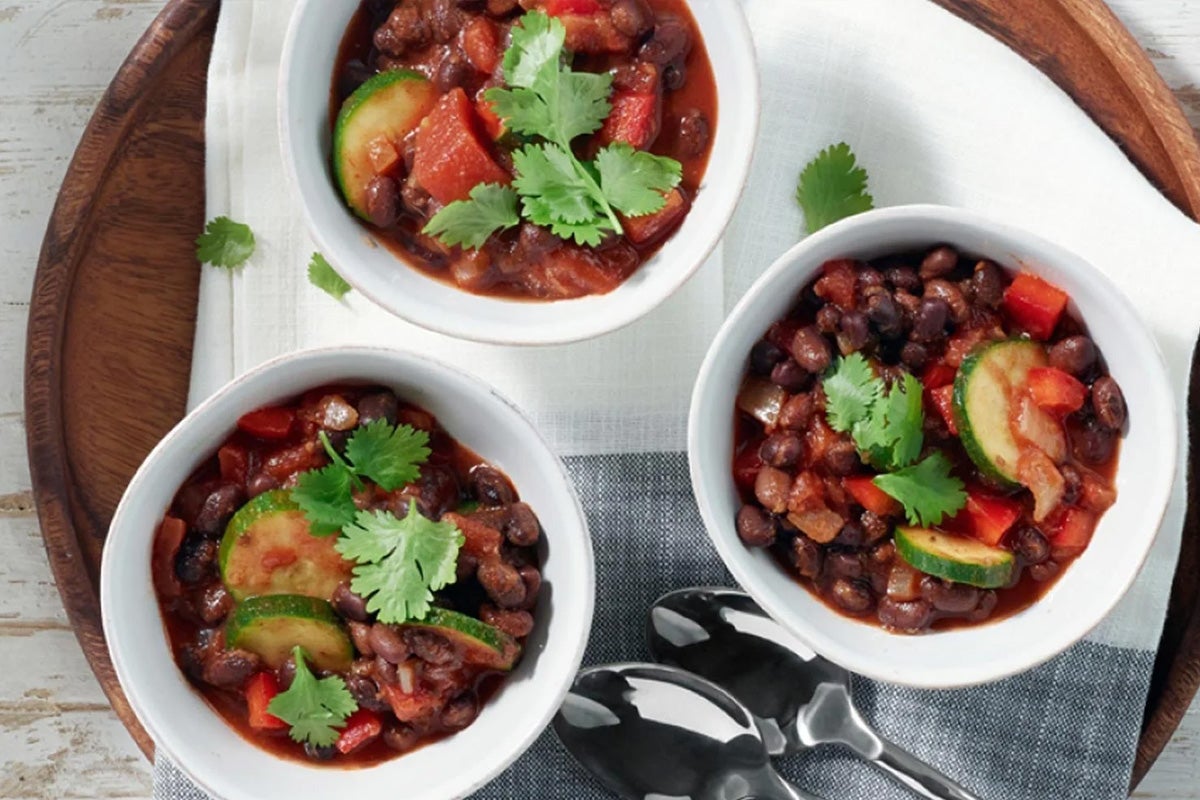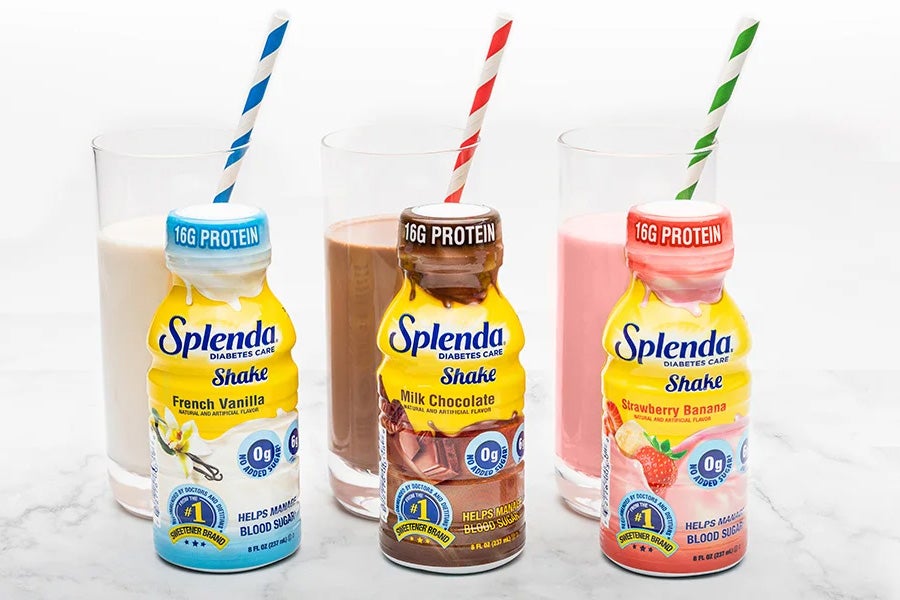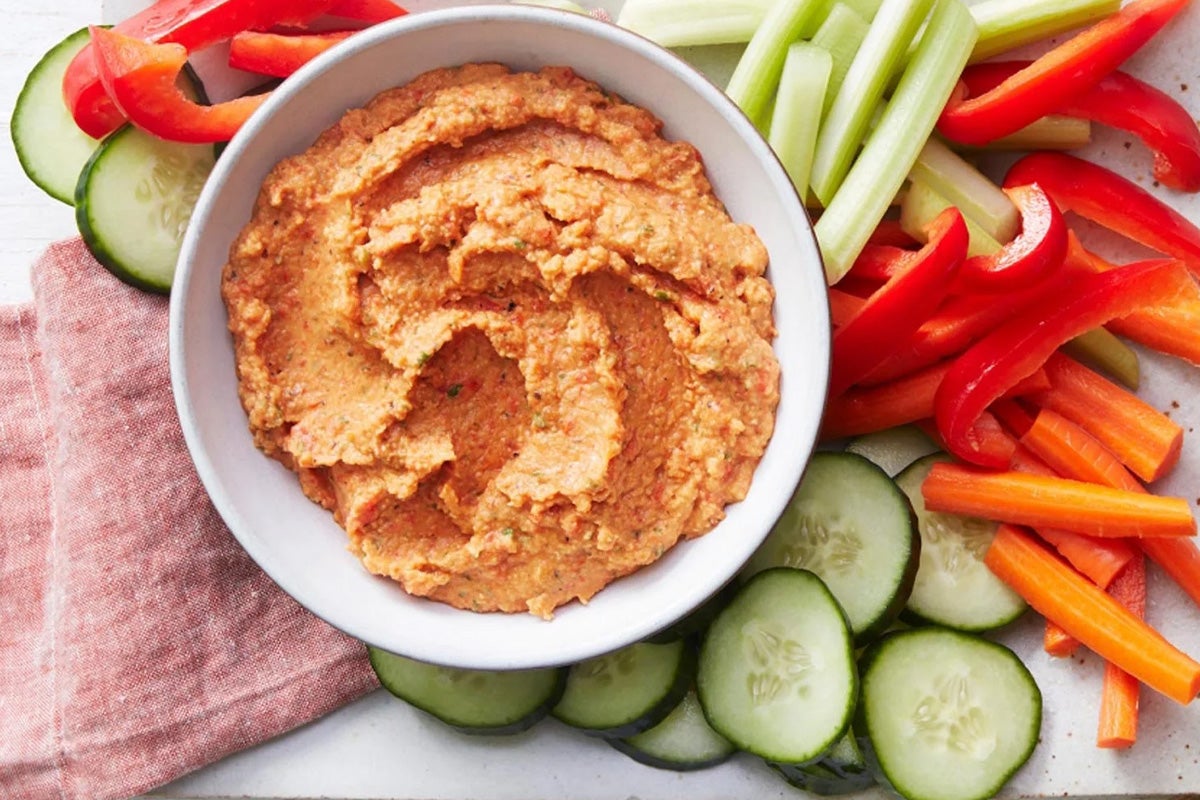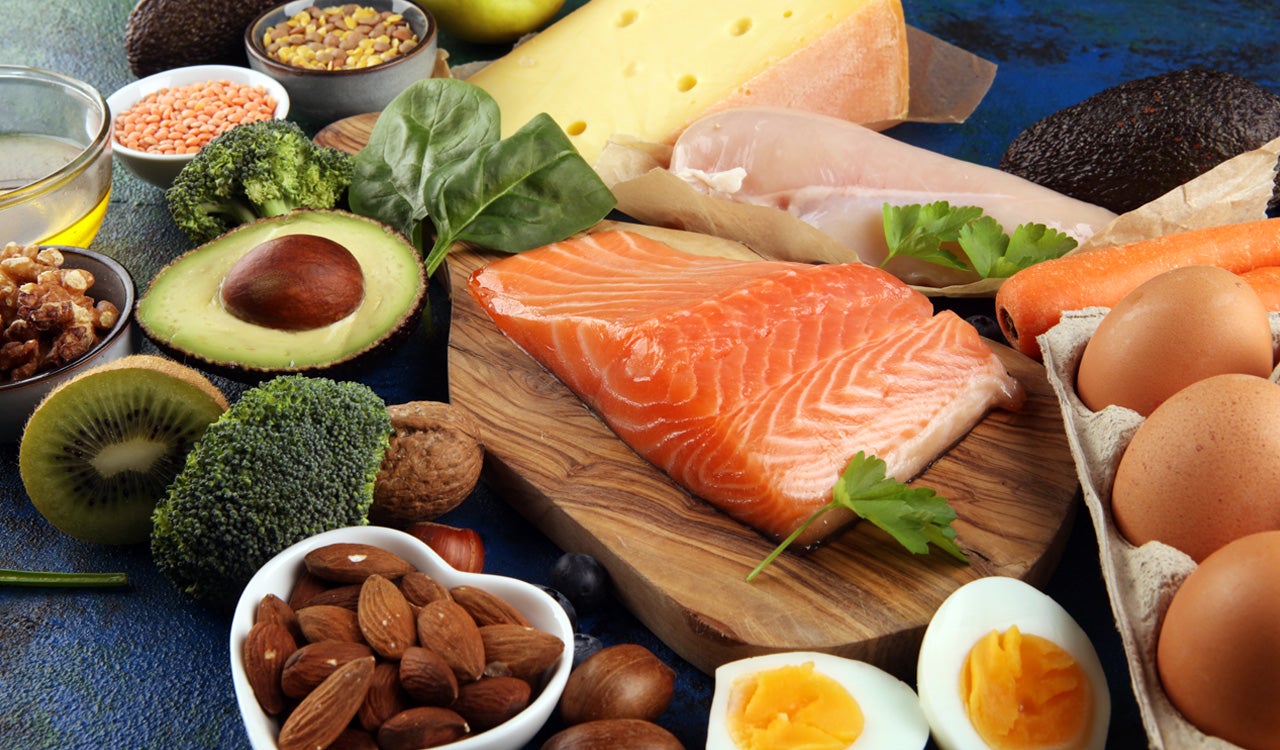The Importance of Protein for People With Diabetes
Updated on March 22, 2023

Protein is one of the three macronutrients or “big nutrients” that make up the foods we eat—the other two are carbohydrate and fat. Protein, carbohydrate, and fat are essential nutrients, meaning they each play a vital role in the human body. Protein’s job is to make and repair our body’s cells, which is important for growth, muscle-building, and skin-healing.
Unfortunately, many people with diabetes have trouble getting enough protein or consuming it in healthy ways. A recent study showed that half of the adults with diabetes who were surveyed did not consume the daily recommended amount of protein. The adults who did not meet protein recommendations had significantly poorer diet quality and a significantly higher number of physical limitations, including trouble with standing for long periods, kneeling, and pushing or pulling large objects.

It has been shown through previous studies that people with diabetes are more prone to muscle loss compared to people without diabetes. Given that protein is essential for building muscle, paying attention to protein intake is indeed important for diabetes management. Something else to consider is that diabetes makes it difficult for skin to heal, making people with diabetes more prone to foot ulcers and thus amputations. Because protein helps skin heal, it’s important to get enough of it when managing diabetes.
How Much Protein Should Someone with Diabetes Eat?

The protein recommendation for people with diabetes is actually not much different from the recommendation for the general population, which is that adults get a minimum of 0.8 grams of protein for every kilogram of body weight per day (10-35% of total calories). For example, this would mean that a 150-pound (68-kilogram) person should aim for a minimum of 55 grams of protein per day.
The American Diabetes Association (ADA) reports that the average protein intake is 1-1.5 grams per kilogram of body weight per day (15-20% of total calories), which is acceptable for people with diabetes. The ADA states that all in all, protein intake goals should be individualized based on a person’s current eating patterns, preferences, and weight goals.
How Does Protein Affect Blood Glucose?

Many people believe that protein has zero impact on blood glucose or “blood sugar” levels, but this actually isn’t completely true. A recent study in people with type 1 diabetes found that when a high amount of protein (75 grams or more) is eaten alone, it can significantly impact blood sugar levels 3-5 hours after eating. Because other studies have found similar results, the ADA now recommends that people who take mealtime insulin take additional insulin for high-protein meals. So if you take insulin for meals, talk with your doctor or diabetes educator about how you should dose for high-protein meals. However, keep in mind that this is only for high-protein meals. Typical amounts of protein (14-21 grams per meal) will have minimal to no impact on blood sugar levels, especially for people who do not need to take insulin, such as people with prediabetes and many people with type 2 diabetes.
How Does Protein Contribute to Weight Loss?

Studies have shown that meal plans with higher levels of protein can contribute to weight loss because protein increases satiety or a feeling of fullness. This makes sense if you really think about it. Have you ever had a carb-dense breakfast like cereal and found yourself hungry in just a couple of hours? Compare that to when you had a protein-dense breakfast, such as an omelet. Did that one keep you feeling full for longer? It should have.
People with diabetes can greatly benefit from weight loss because it’s associated with decreased insulin resistance, improved blood sugar control, and improved blood pressure. Now this doesn’t mean you should go on an all-protein diet to lose weight and get your A1c down. (Remember: Everything in moderation!) Rather, including protein with carb at every meal and snack can help you get full faster and stay full, so that you don’t overindulge.
Is Too Much Protein Bad for Diabetes?
For many years, it was believed that people with kidney disease have to restrict their protein intake because their kidneys can’t handle too much of it. This guideline was important to many people with diabetes because about 1 in 3 adults with diabetes has kidney disease. However, the most recent guideline from the ADA states that people with diabetes who have kidney disease should not decrease their protein intake below the standard recommendation of 0.8 grams/kilogram body weight/day. It’s been found through more recent research that high and normal protein intake is not associated with worsening of the kidneys. This does not mean people with diabetes can start eating 16-ounce steaks every day. But there is no need to cut protein intake below the standard recommended amount if you have kidney disease.
What Are the Best Protein Foods for People With Diabetes?
There are a variety of protein foods that people with diabetes can enjoy eating, but some are certainly better for your health than others.
Lean meats and fish

For people with diabetes, lean meats and fish are preferred over red meats because of the strong connection between diabetes and heart disease. Red meats are higher in saturated fat, which can raise your blood cholesterol and further increase your risk of heart disease. This doesn’t mean you need to cut out all red meat—just limit it. Examples of lean meats and fish include:
- Skinless chicken breast
- Skinless turkey (white meat)
- White-flesh fish (tilapia, cod)
- Salmon – Try our Sheet Pan Teriyaki Salmon and Vegetables (26g protein per serving)
- Tuna
Eggs and dairy

For quite some time, eggs were villainized for their high cholesterol content leading to many people ditching the yolk and only eating the whites. However, it was found that the cholesterol in eggs does not appear to impact a person’s blood cholesterol very much at all, so the there is no need to limit them. Not only are eggs an excellent source of protein, they are packed with 13 essential vitamins and minerals. So go ahead and eat the whole egg!
Dairy foods are not as straight-forward as eggs. The protein content varies depending on the type of dairy food. To avoid extra calories, opt for low-fat and fat-free dairy products—you’ll get the protein either way. Examples of high-protein dairy foods include:
- Greek yogurt- Try our Mango Chia and Yogurt Parfait (7g protein per serving)

- Cottage cheese
- Cheese (opt for lower-sodium varieties, like Swiss and mozzarella)
- Ultra-filtered milk
Plant-based protein

What’s great about plant-based proteins is that they include healthy fats and fiber, unlike animal-based proteins. However, they also contain carbs, so make sure to consider this and read the Nutrition Facts Label if you are carb counting. Here are some examples of plant-based proteins:
- Beans and lentils – Try our Black Bean Chili (10g protein per serving)
- Hummus
- Edamame
- Soy nuts
- Nut butters (opt for no sugar added and low-sodium varieties)
- Tofu
Protein shakes and snacks

If you’re struggling to get enough protein in your meals, then consider getting it in through protein shakes. A shake is ideal for getting that essential protein in your diet in a delicious and convenient way. There are many factors to consider when choosing a protein shake. For people with diabetes, blood sugar management should be top of mind. Splenda Diabetes Care Shakes contain a diabetes-specific nutrition formula designed to help people with diabetes manage their blood sugar. Included in that formula is 16 grams of high-quality protein. You can pair the shake with a meal or have it in place of a meal or snack when you’re on the go.
Other ideas for protein-filled snacks include:
- Hummus with veggies- Try our Sweet Red Pepper Hummus (3g protein per serving)

- Nuts and seeds
- Cheese and crackers
- Cottage cheese and fruit
Tips for Balancing Protein in Your Diet
So how do you know you’re getting a balanced amount of protein in your diet? A good place to start is by looking at your plate. You should have a source of protein at every meal to balance the carb foods. Remember, this protein can be anything from chicken to tofu. Use the Diabetes Plate Method for guidance, which recommends filling a quarter of your plate with protein foods. A standard portion of protein is 3 ounces which is equivalent to about 21 grams of protein. To put that in practical terms, this means your piece of meat or fish would be about the size of a deck of cards.
Remember: While protein is important for diabetes management, people with diabetes do not need a “special” amount of protein in their diet—they can follow the standard guidelines like anyone else. Also remember that everyone’s protein needs are unique because we are all unique individuals.
Written by Holly Moran, MS, RDN, LD, CDCES and member of the Splenda Healthcare Team.

